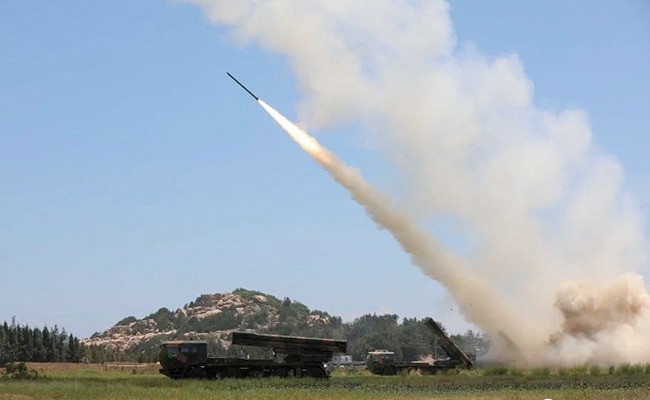
The shell can travel 2,500 metres in one second. (File Photo of a Chinese missile/Reuters)
Chinese military scientists have developed a so-called ‘smart shell’ that is capable of delivering a precision strike to a target at hypersonic speed. According to South China Morning Post (SCMP), the shell is propelled by an electromagnetic gun and can reach a staggering speed of Mach 7 (seven times the speed of sound). But even at such a high speed, it can receive stable signal from the satellite and continuously adjust its flight path, with a margin of error of less than 15 metres.
Its precision-strike capabilities may make it insufficient to attack smaller mobile objects like tanks, but it would theoretically be ideal for larger, static targets such as warships, or ports.
SCMP said the shell is the realisation of a US military concept that it proposed in 2012. The US had planned to test such a shell within five years (by 2017), but that deadline passed without any concrete result. The US military abandoned the research and development of the weapons system by 2021, the outlet further said.
The shell can travel 2,500 metres or around 8,200 feet in one second.
The Chinese team that developed the Mach 7 shell said they received no support from the western scientists.
“We had no guidance, not even a cursory introduction to guided missile navigation systems, especially the satellite navigation component,” Feng Junhing of China’s Naval University of Engineering wrote in an engineering journal in November, as per the SCMP report.
The weapon and its launching system could prove to be a game-changer on the battlefield as they can not only reduce cost, but also maintain long-range and precision capabilities of missiles.
During launch, though, the shells generate a significant electromagnetic field, which can damage electronic components such as microchips or antennae, with concerns about its own satellite navigation.
The issue has vexed scientists and engineers across the world, but Chinese scientists claim they bypassed this problem by developing an antenna that can withstand electromagnetic signals, while also maintaining precise satellite navigation.
Another issue is that of heat generation. St such high speed, the shell will generate intense heat due to friction. But the Chinese scientists said they used cost-effective and mass-produced aerogel as thermal barrier.
The scientists are yet to test the shell in actual combat scenario.




